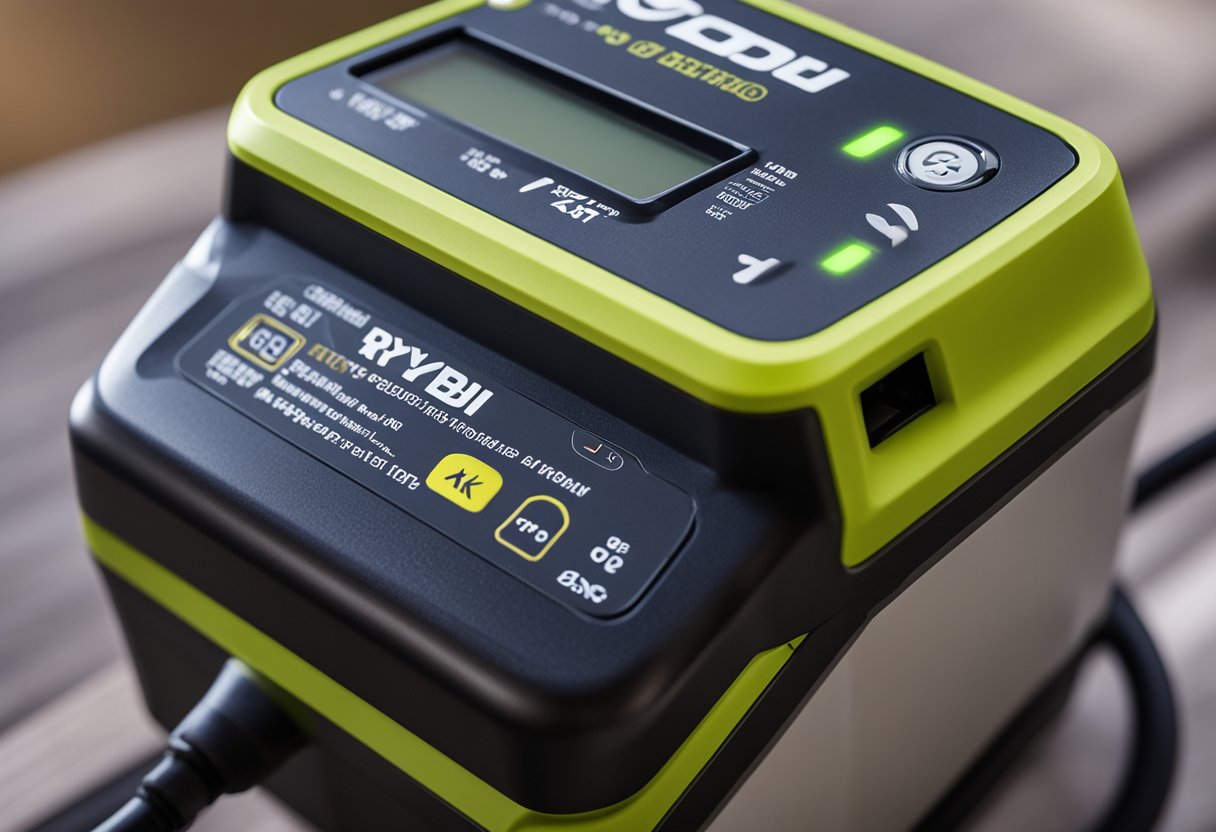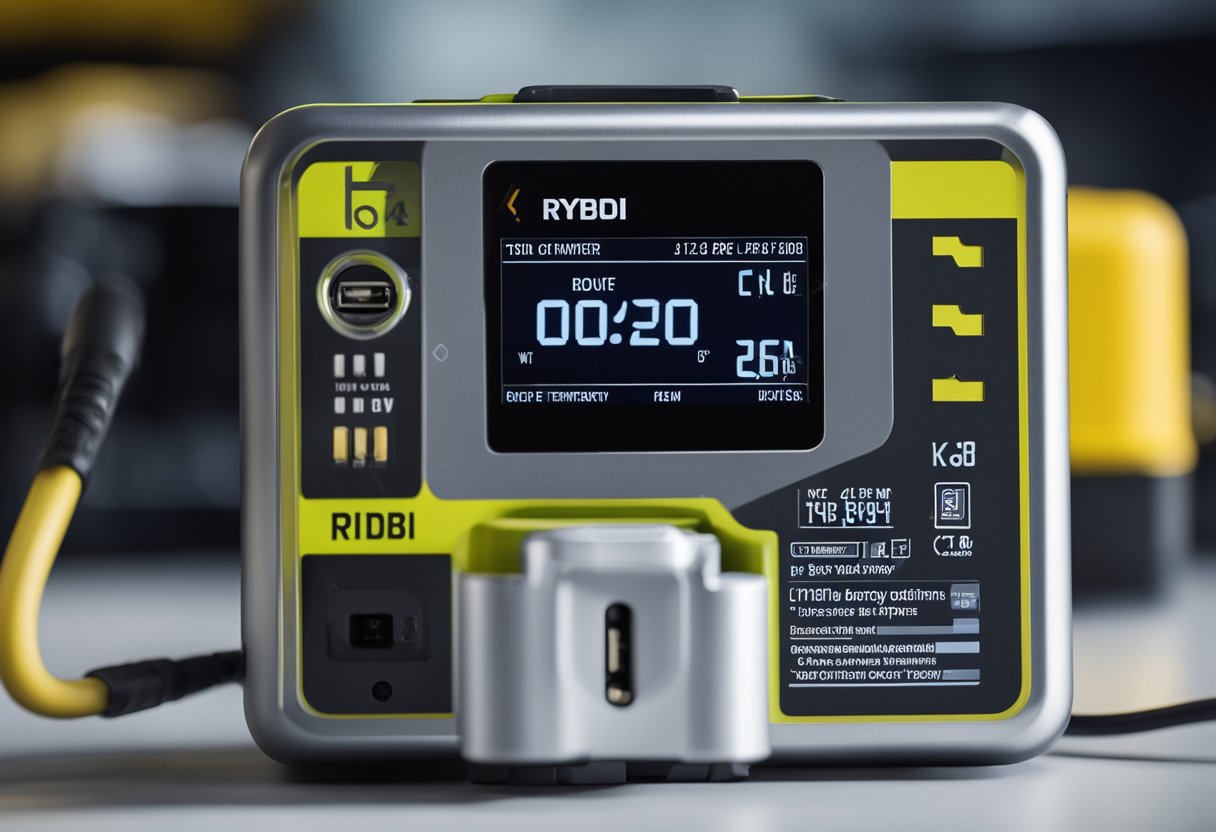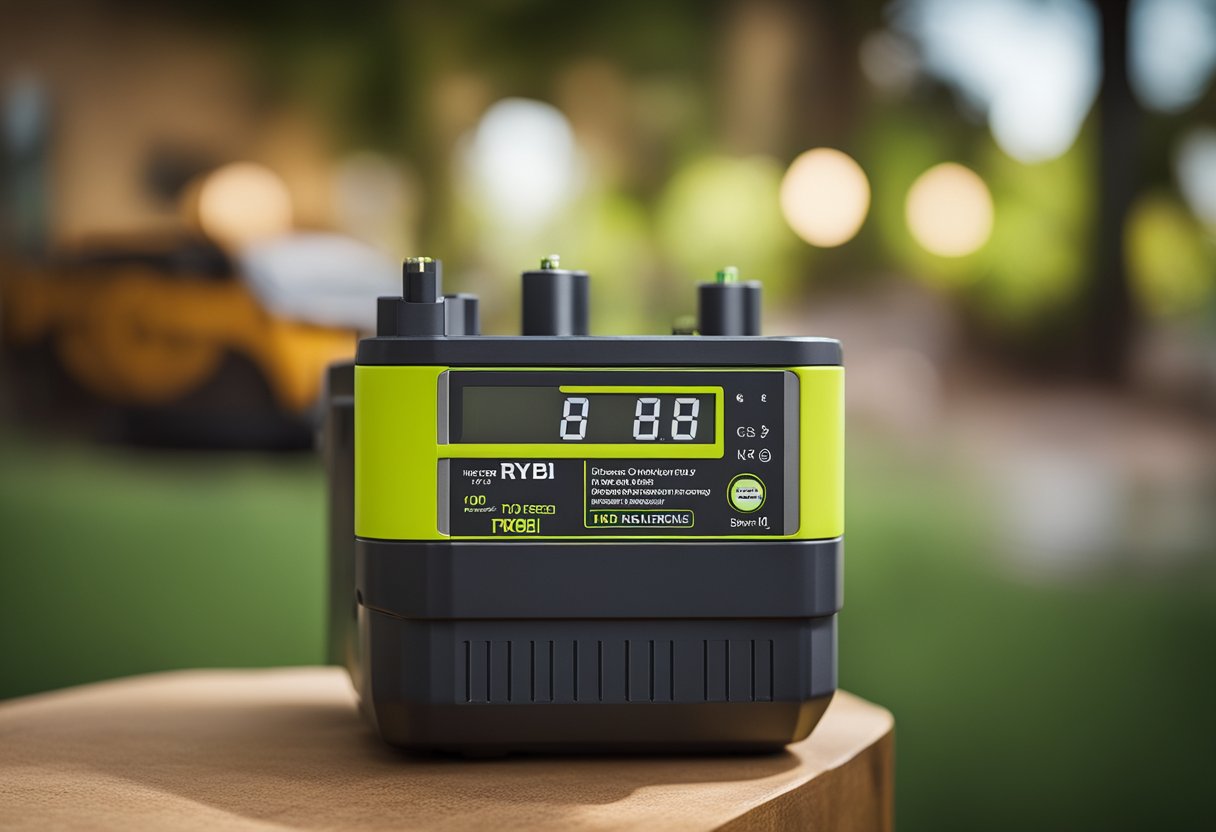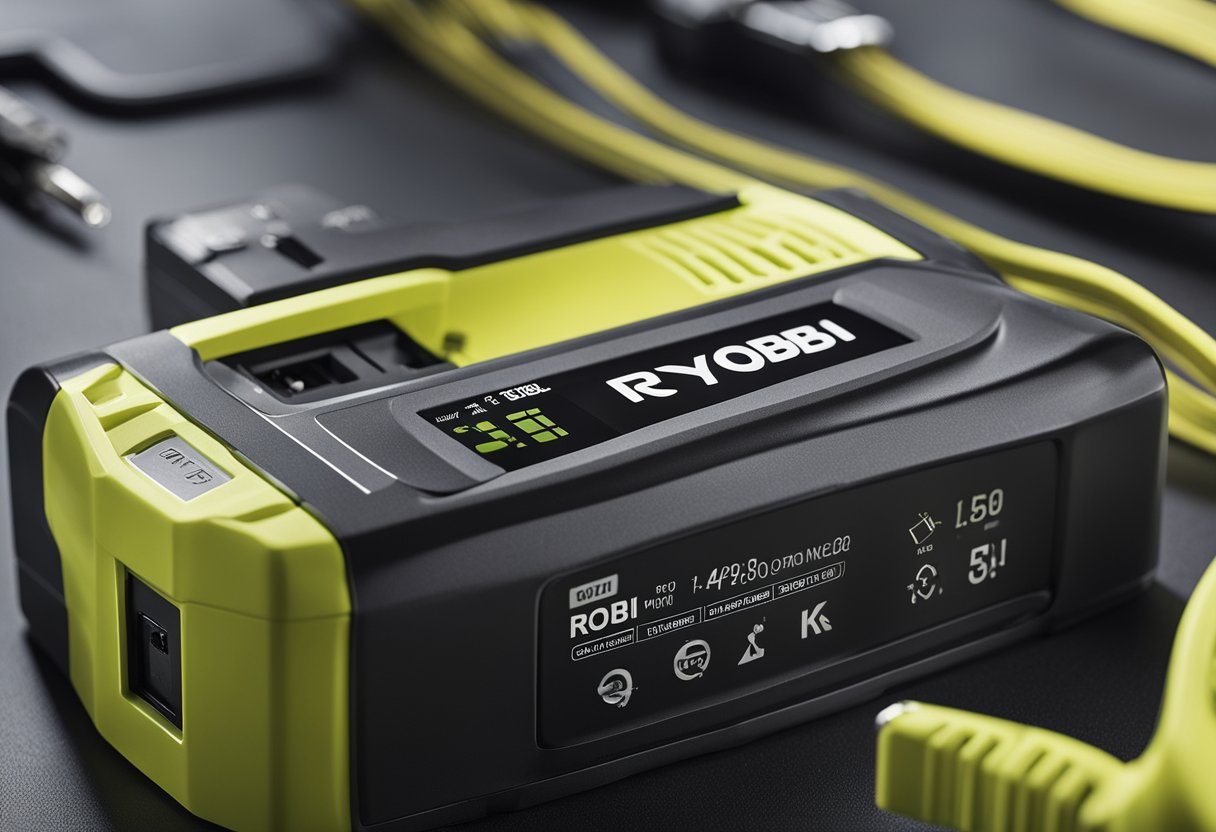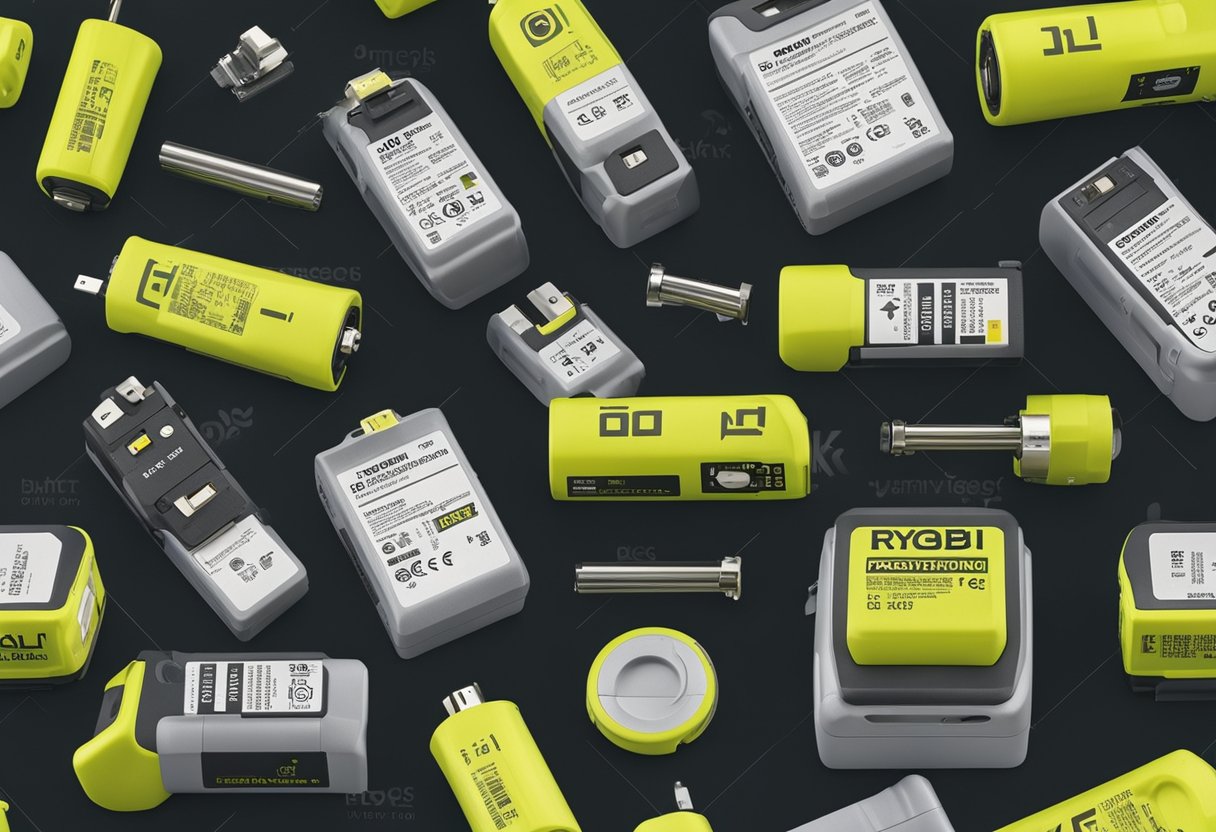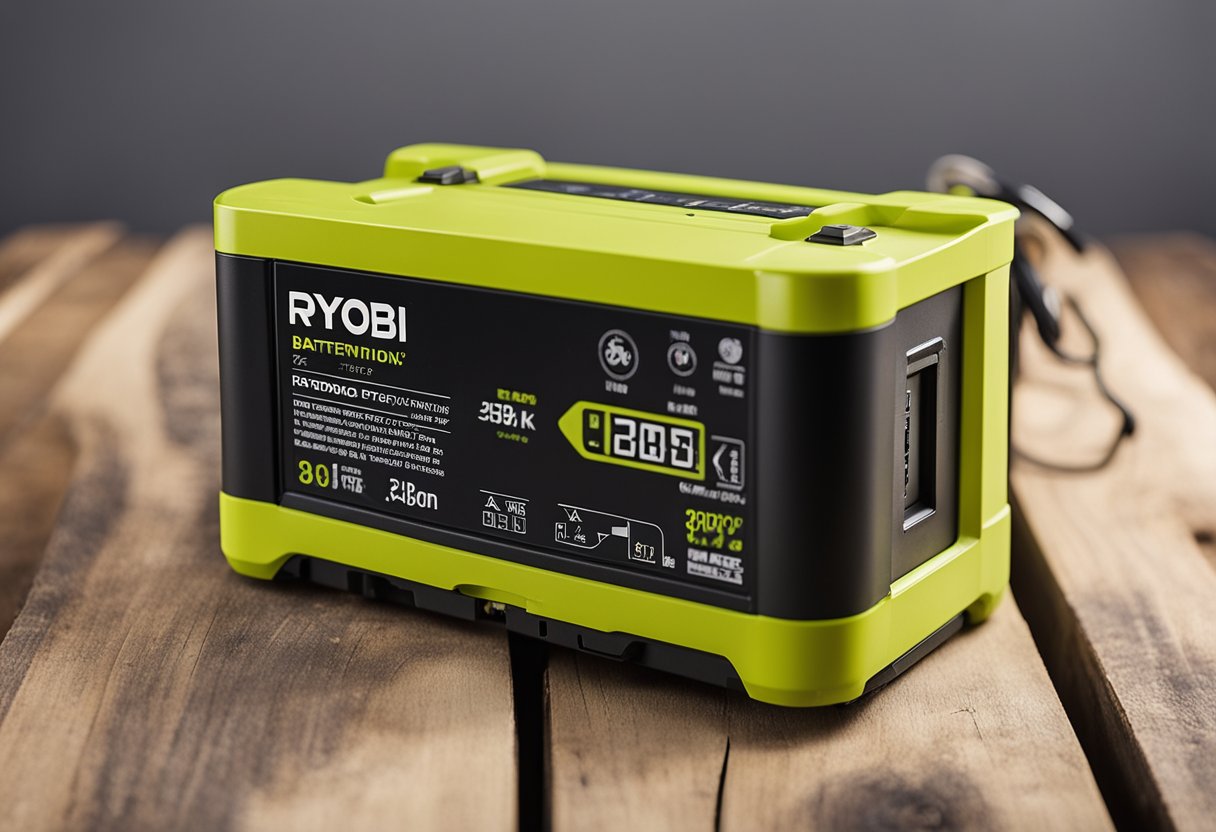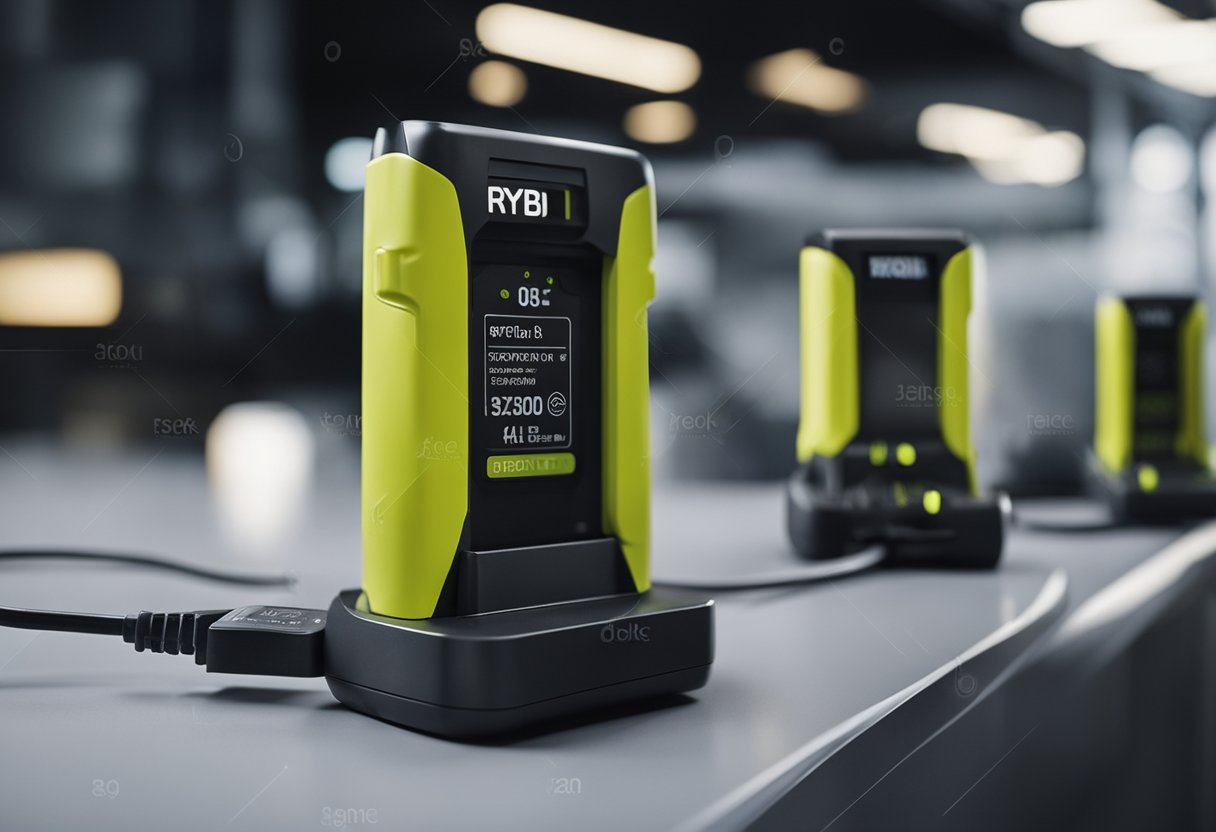Ryobi is a well-known brand in the power tool industry, and their batteries are no exception. If you own a Ryobi power tool, you know how important it is to have a fully charged battery on hand. But how long does it take to charge a Ryobi battery? In this article, I will provide you with all the information you need to know about Ryobi battery charge time.
Understanding Ryobi Batteries is crucial to understanding how long it takes to charge them. Ryobi batteries come in different sizes and capacities, and they are compatible with different types of chargers. It’s important to note that not all Ryobi batteries are created equal, and some may take longer to charge than others. Additionally, the charging time of a Ryobi battery can be influenced by several factors, such as the battery’s age, temperature, and usage.
Key Takeaways
- Ryobi batteries come in different sizes and capacities, and their charging time can vary.
- The charging time of a Ryobi battery can be influenced by several factors, such as the battery’s age, temperature, and usage.
- To ensure optimal battery performance, it’s important to use the right charger for your Ryobi battery and follow safety and warranty guidelines.
Understanding Ryobi Batteries
https://www.youtube.com/watch?v=vCy3Upmum7w&embed=true
As a power tool user, it is important to understand the batteries that power your tools. Ryobi batteries are lithium-ion batteries that come in various sizes and voltages. These batteries are designed to provide long-lasting power to Ryobi power tools.
Ryobi batteries are available in 18V, which is the most common voltage for Ryobi power tools. The 18V Ryobi batteries are made up of advanced lithium-ion cells that provide premium power to the tools. These cells are designed to last longer and provide more power than traditional NiCad batteries.
The Ryobi™ 18V batteries are available in different capacities, ranging from 1.5Ah to 9.0Ah. The capacity of the battery determines how long it can power a tool before needing to be recharged. Generally, higher capacity batteries take longer to charge compared to lower capacity ones.
Ryobi batteries have a built-in fuel gauge that shows the remaining charge level of the battery. The fuel gauge is usually located on the battery pack and displays the charge level using LED lights. When all bars are illuminated or a solid light is displayed, it means the battery is fully charged.
It is important to note that the charging time of Ryobi batteries can be affected by various factors such as temperature and charging method. Charging in extreme temperatures, whether too hot or too cold, can potentially reduce the efficiency and overall performance of the battery. It’s advisable to charge the battery in a temperature-controlled environment for optimal charging results.
In summary, Ryobi batteries are advanced lithium-ion cells that provide premium power to Ryobi power tools. They are available in different capacities and voltages, and have a built-in fuel gauge that displays the remaining charge level. The charging time can be affected by various factors, so it’s important to charge the battery in a temperature-controlled environment for optimal charging results.
Charging Ryobi Batteries
https://www.youtube.com/watch?v=ss-pAKGu1gg&embed=true
As a Ryobi battery user, I know the importance of efficient charging to ensure optimal performance and prolong battery lifespan. In this section, I will provide information on charging Ryobi batteries, including charging time, chargers, charging process, and charging methods.
Charging Time
The charging time for Ryobi batteries varies depending on the charger type, battery capacity, and state of charge. According to BatterySkills.com, a Ryobi Lithium-Ion battery can be fully charged in around 60 minutes. However, the charging time may be longer for larger battery capacities or when using a standard charger.
Chargers
Ryobi offers a range of chargers for different battery types and sizes. The standard charger is suitable for most applications and takes longer to fully charge a battery than a fast charger. On the other hand, fast chargers use a rapid charging process to charge batteries quickly. According to Storables.com, the fast charger can charge a 40V battery in as little as 90 minutes.
Charging Process
Ryobi batteries use a three-stage charging system to ensure efficient and safe charging. The charging process includes bulk charging, absorption charging, and maintenance charging. During bulk charging, the charger delivers a constant current to the battery until it reaches a specified voltage. Absorption charging then provides a constant voltage to the battery until it is fully charged. Finally, maintenance charging maintains the battery at full charge without overcharging it.
Charging Methods
To ensure optimal battery performance and prolong lifespan, it is important to use the appropriate charging method for your Ryobi battery. According to Storables.com, the best charging method for Ryobi batteries is to follow the manufacturer’s guidelines, store them properly, and use the appropriate charger. It is also important to consider factors such as battery capacity, charger type, and state of charge to estimate charging time.
In conclusion, charging Ryobi batteries efficiently and correctly is crucial for optimal performance and prolonging battery lifespan. By following the manufacturer’s guidelines, using the appropriate charger, and considering factors such as battery capacity and charger type, you can ensure that your Ryobi batteries are charged safely and effectively.
Factors Influencing Charging Time
When it comes to charging Ryobi batteries, there are several factors that can influence the charging time. As someone who has used Ryobi batteries for a while, I have learned that understanding these factors can help you optimize the charging time and ensure optimal performance of your battery.
Battery Capacity
One of the most significant factors that can influence the charging time of a Ryobi battery is its capacity. Generally, batteries with higher capacity take longer to charge than those with lower capacity. For instance, a 9.0Ah battery will take longer to charge than a 1.5Ah battery. Therefore, it’s essential to consider the battery capacity when estimating the charging time.
Temperature
Temperature is another crucial factor that can affect the charging time of a Ryobi battery. Charging the battery in extreme temperatures can be detrimental to its lifespan and performance. For instance, charging the battery in too hot or too cold environments can lead to suboptimal performance and reduced battery life. Therefore, it’s advisable to charge the battery at ambient temperatures for optimal performance.
Charging Method
The charging method is another factor that can affect the charging time of a Ryobi battery. Ryobi offers various charging methods, including fast charging and overnight charging. Fast charging is suitable for those who need their batteries charged quickly, while overnight charging is ideal for those who have plenty of time to charge their batteries. However, it’s essential to note that fast charging can reduce the battery’s lifespan, while overnight charging can help maintain the battery’s lifespan.
Battery Age
The age of the battery is another factor that can influence the charging time. As the battery ages, its capacity and performance may reduce, leading to longer charging times. Therefore, it’s advisable to replace the battery when it starts showing signs of reduced performance.
Battery Temperature
The temperature of the battery can also affect the charging time. Charging the battery when it’s too hot or too cold can lead to suboptimal performance and reduced battery life. Therefore, it’s essential to ensure that the battery is at the optimal temperature range for charging.
Ambient Temperature
The ambient temperature is another factor that can affect the charging time of a Ryobi battery. Charging the battery in extreme temperatures can lead to suboptimal performance and reduced battery life. Therefore, it’s advisable to charge the battery at ambient temperatures for optimal performance.
In conclusion, understanding the factors that can influence the charging time of a Ryobi battery is crucial to ensure optimal performance and battery life. By considering these factors, you can optimize the charging time and ensure that your battery is ready to tackle any project swiftly.
Battery and Charger Compatibility
https://www.youtube.com/watch?v=hoEpBb8NxTo&embed=true
As a Ryobi user, one of the most important things to keep in mind is battery and charger compatibility. Fortunately, Ryobi has made this process relatively easy with their One+™ System Compatibility.
All Ryobi™ 18V One+™ tools are compatible with any Ryobi One+™ battery. This means that if you have multiple Ryobi tools, you can use the same battery across all of them. This is a great feature that saves you time and money, as you don’t have to purchase multiple batteries for each tool.
When it comes to chargers, Ryobi offers a range of options that are compatible with their One+™ batteries. The charging time of a Ryobi battery depends on various factors such as the battery’s capacity, the type of charger, and the level of depletion.
For example, the Ryobi 40V Lithium-Ion Rapid Charger charges 40V batteries in 1-hour or less. This charger has indicator lights that provide the battery charging status and even lets you know if the battery is too hot or too cold to charge.
It’s important to note that not all Ryobi chargers are compatible with all Ryobi batteries. It’s essential to check the compatibility of your charger and battery before using them together.
In conclusion, Ryobi has made battery and charger compatibility easy with their One+™ System Compatibility. As long as you have a Ryobi One+™ battery, you can use it across all Ryobi™ 18V One+™ tools. Just make sure to check the compatibility of your charger and battery before using them together to ensure optimal performance.
Understanding Battery Capacity
As a Ryobi power tool user, understanding the battery capacity is crucial in maximizing the performance and runtime of your tools. Battery capacity is measured in ampere-hours (Ah), which refers to the amount of charge that a battery can deliver in one hour.
The ampere-hour (Ah) rating of a battery is an indication of how long the battery can last before requiring a recharge. For example, a 1.5Ah battery can deliver a current of 1 amp for 1.5 hours, while a 2.0Ah battery can deliver a current of 1 amp for 2 hours.
It is important to note that higher capacity batteries such as the 6.0Ah battery can power tools for a longer duration before requiring recharging. This is because they have a higher energy storage capability, which directly affects their runtime.
To ensure your battery lasts as long as possible, it is important to maintain its battery health and condition. This includes avoiding overcharging or undercharging the battery, storing it in a cool and dry place, and using the correct charger for your battery.
In conclusion, understanding the battery capacity is essential to maximizing the performance and runtime of your Ryobi power tools. By using the correct battery capacity for your tools and maintaining the battery health and condition, you can ensure optimal performance and longevity of your tools.
Advanced Features and Technology
As a proud owner of Ryobi tools, I have always been impressed by the advanced features and technology that the brand offers. When it comes to the battery charge time, Ryobi has implemented some innovative features that make charging faster and more efficient.
One of the most notable features is the IntelliCell™ technology, which optimizes the performance of each cell within the battery. This ensures that the battery delivers maximum power and runtime, while also extending its overall lifespan. This technology is especially useful for high-drain tools, as it helps to prevent overheating and overloading.
Another feature that I appreciate is the high visibility LED fuel gauge, which allows me to easily monitor the battery’s charge level. This feature comes in handy when I’m working on a project and need to quickly check how much charge is remaining. The LED lights also provide on-board fuel gauge feedback, which is another convenient way to keep track of the battery’s charge level.
When it comes to charging the battery, Ryobi offers different charger types to suit different needs. The standard charger takes around 80 minutes to fully charge a 4.0 Ah battery, while the fast charger can charge the same battery in just 30 minutes. This is a significant time saver, especially when I’m working on a project that requires multiple batteries.
Overall, I’m impressed by the advanced features and technology that Ryobi has implemented in their batteries. From the IntelliCell™ technology to the high visibility LED fuel gauge, these features make charging faster and more efficient, while also improving the overall performance and lifespan of the battery.
Safety and Warranty Information
As a responsible user, it is important to follow all safety guidelines while charging Ryobi batteries. The charger should be placed in a dry area and kept away from water and other liquids. It should also be kept away from flammable materials and sources of heat. The battery should not be charged in temperatures below 0 degrees Celsius or above 40 degrees Celsius.
It is also important to note that all Ryobi batteries come with a warranty. The 18V ONE+ batteries come with a 3-year warranty, while the 40V and 48V batteries come with a 5-year warranty. The warranty covers any defects in materials or workmanship, and Ryobi will repair or replace the battery if it fails during normal use.
To ensure that you are covered under the warranty, it is important to register your product within 30 days of purchase. You can do this online or by calling Ryobi customer service. In addition, it is important to use only Ryobi chargers and batteries together, as using non-Ryobi products can void the warranty.
It is also important to note that the warranty does not cover damage caused by misuse, abuse, or neglect. If the battery is damaged due to any of these reasons, it will not be covered under the warranty.
By following the safety guidelines and taking advantage of the warranty, you can ensure that your Ryobi battery stays in good condition and lasts for a long time.
User Reviews and Experiences
As a frequent user of Ryobi power tools, I have had my fair share of experiences with their batteries. In my opinion, the charge time of a Ryobi battery largely depends on the battery pack design and capacity.
I have found that the 18V Ryobi batteries with a capacity of 4.0 Ah take around 60-90 minutes to charge fully using the standard charger. This is perfect for my needs as it allows me to quickly recharge my battery while taking a break from work. However, if you are using demanding applications that require more power, you may want to consider purchasing a higher capacity battery like the 6.0 Ah or 9.0 Ah.
In my experience, the higher capacity batteries take longer to charge but provide more power and longer run time. For example, the 9.0 Ah battery can take up to 2 hours to charge fully, but it provides enough power to run demanding applications for an extended period of time without having to recharge.
Based on my research and reading user reviews, I have found that the charging time of Ryobi batteries is consistent across different models. I have also found that the reviews of Ryobi batteries are generally positive, with users praising their reliability and long-lasting performance.
Overall, I believe that Ryobi batteries are a reliable and efficient power source for any demanding application. Whether you are a DIY enthusiast or a professional contractor, Ryobi batteries can help you maximize your productivity and get the job done efficiently.
Frequently Asked Questions
What is the average charging time for a Ryobi 18V lithium battery?
The average charging time for a Ryobi 18V lithium battery is around 60 minutes. However, this can vary depending on the specific model of the battery and the charger being used. It’s important to always refer to the manufacturer’s instructions for the recommended charging time for your specific battery.
How do I know when my Ryobi battery is fully charged?
There are a few ways to determine when your Ryobi battery is fully charged. One way is to look for the LED fuel gauge on the battery itself. When the gauge shows all four bars, the battery is fully charged. Another way is to use the charger indicator lights on the charger. These lights will change color or turn off completely when the battery is fully charged.
Can I use a Ryobi 18V charger for a 40V battery?
No, you cannot use a Ryobi 18V charger for a 40V battery. The voltage and charging requirements for these batteries are different, and using the wrong charger can damage the battery or cause a safety hazard. Always use the correct charger for your specific battery.
What is the lifespan of a Ryobi battery?
The lifespan of a Ryobi battery can vary depending on several factors, including how often it’s used, how it’s charged and stored, and the specific model of the battery. Generally, Ryobi batteries can last for several years with proper care and maintenance.
Should I remove my Ryobi battery from the charger once it’s fully charged?
It’s generally recommended to remove your Ryobi battery from the charger once it’s fully charged. Leaving the battery on the charger for an extended period of time can reduce its overall lifespan and performance.
How long does a Ryobi battery hold its charge?
The amount of time a Ryobi battery can hold its charge can vary depending on several factors, including the specific model of the battery, how it’s used, and how it’s stored. Generally, Ryobi batteries can hold their charge for several months when stored properly. However, it’s always a good idea to charge the battery before use if it’s been stored for an extended period of time.

Hi, I’m Sal Muller of Tooltrip.com. My DIY experience led me to understand essential power tools for home projects. Tooltrip.com guides enthusiasts and professionals in choosing right tools for any job. I provide concise top tool reviews for easier, efficient DIY.

